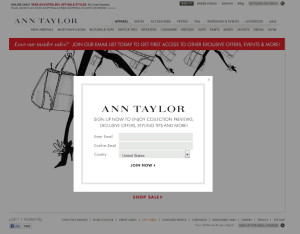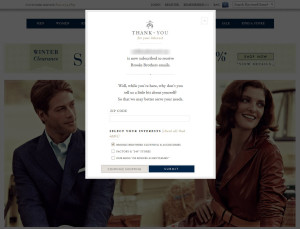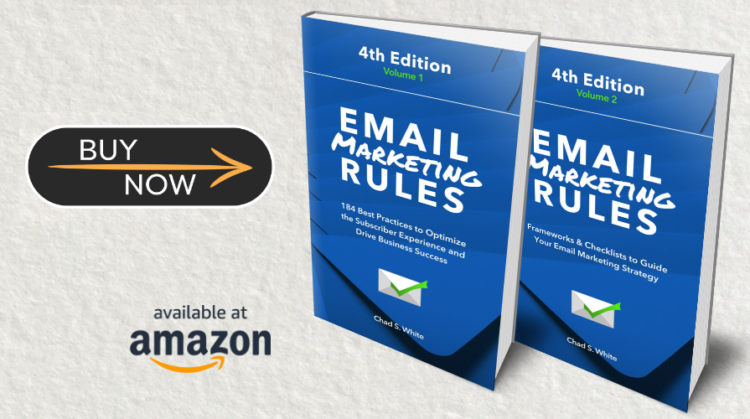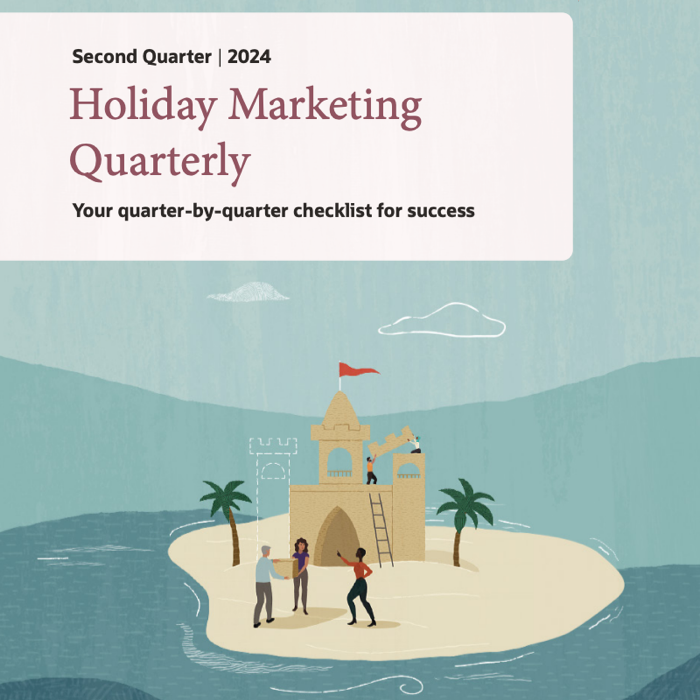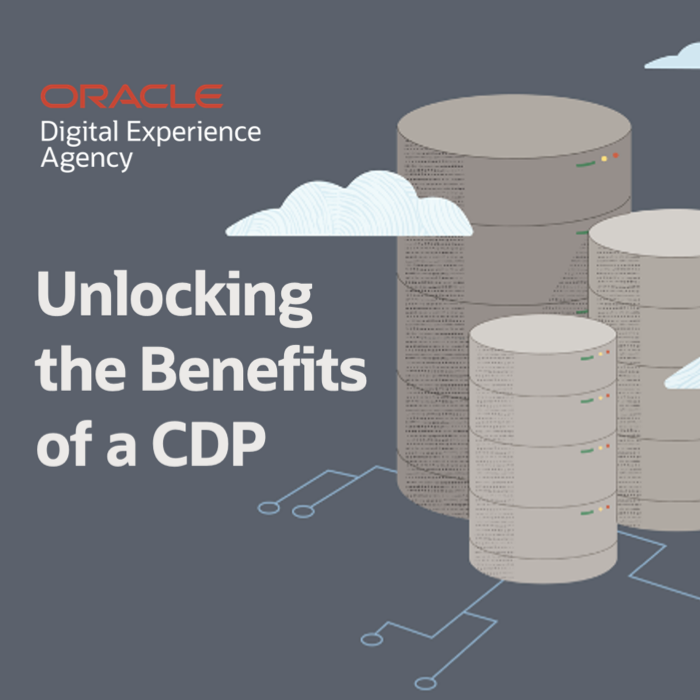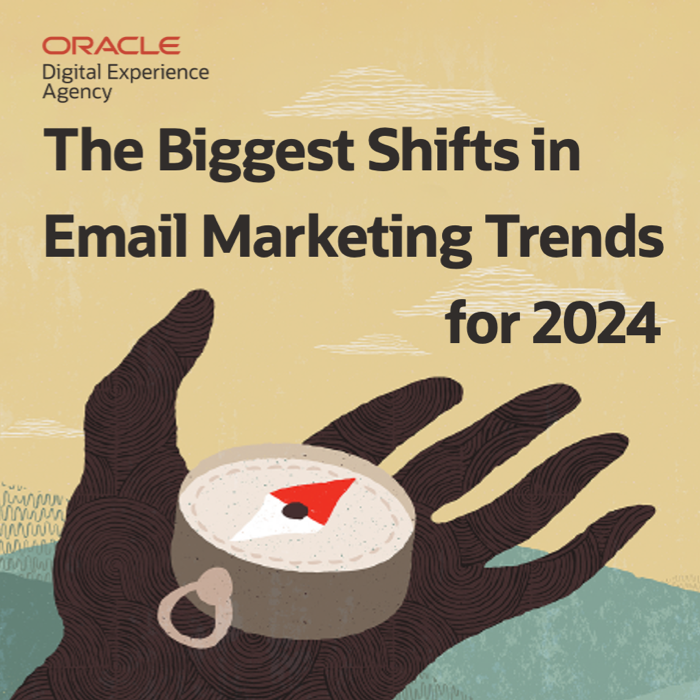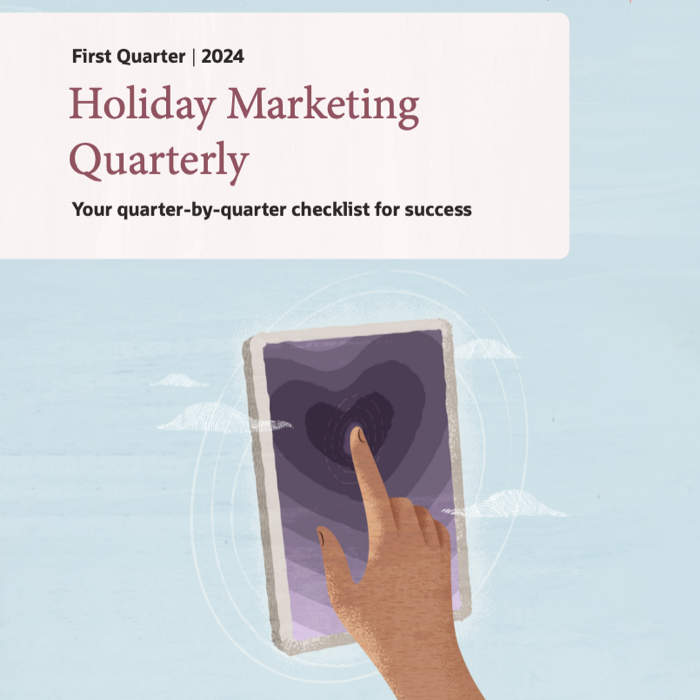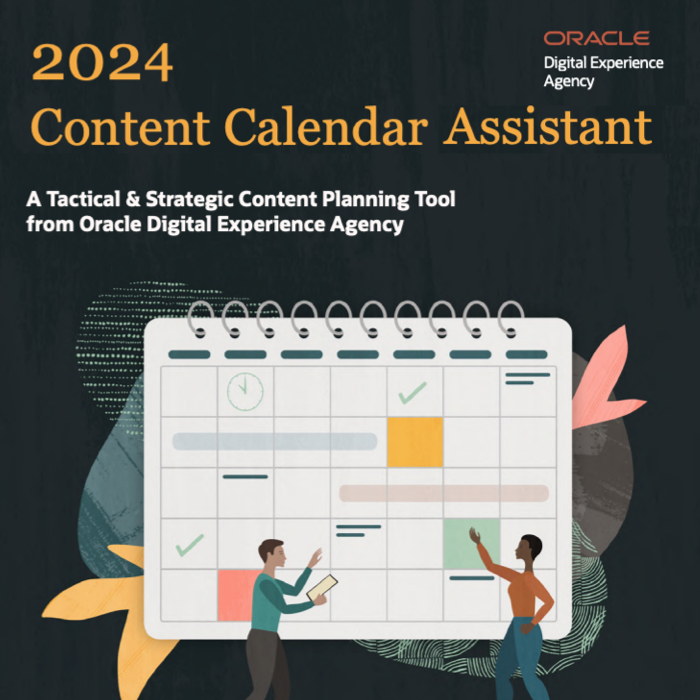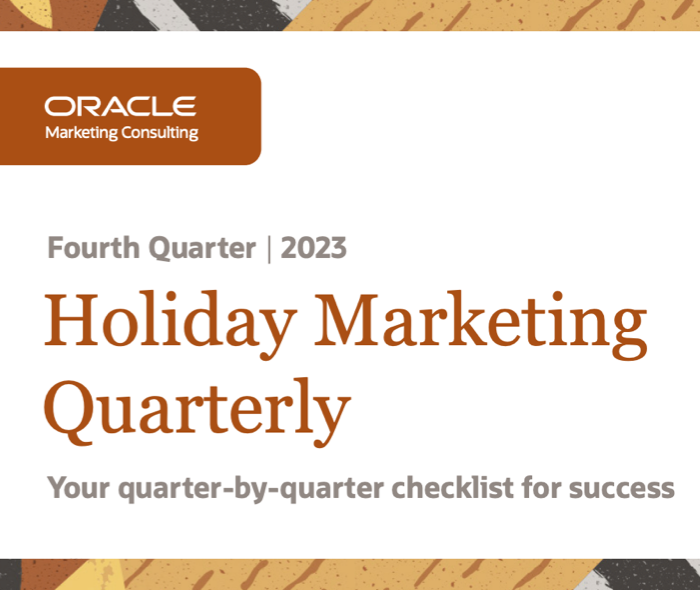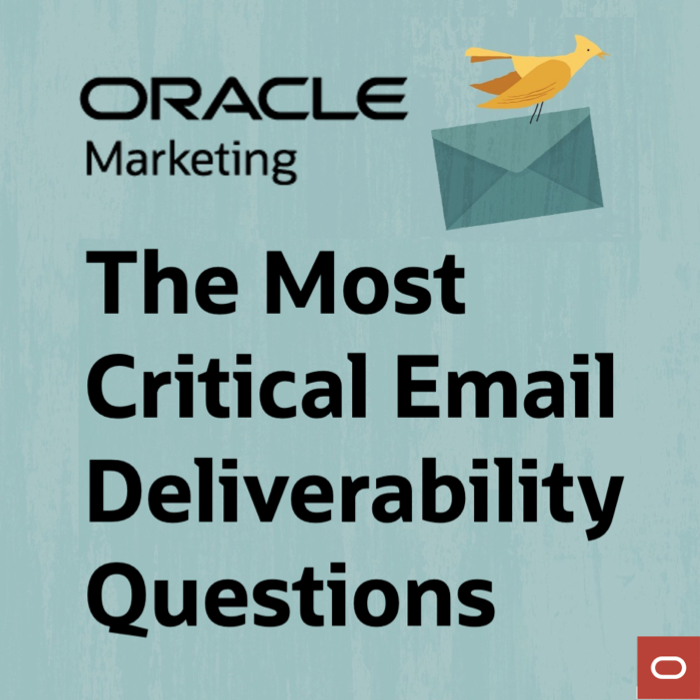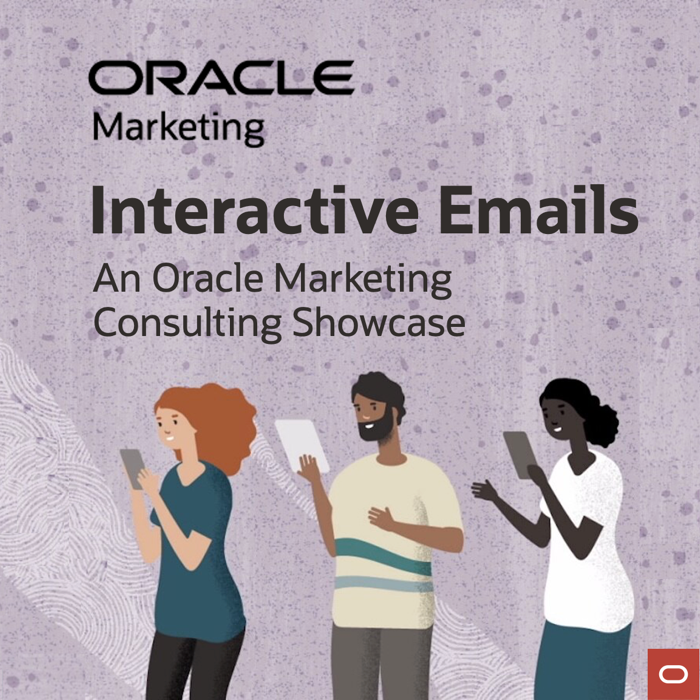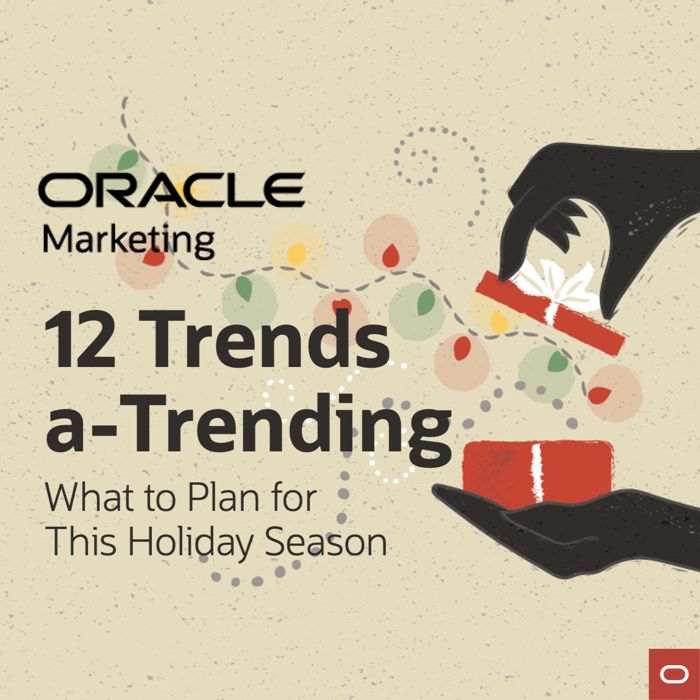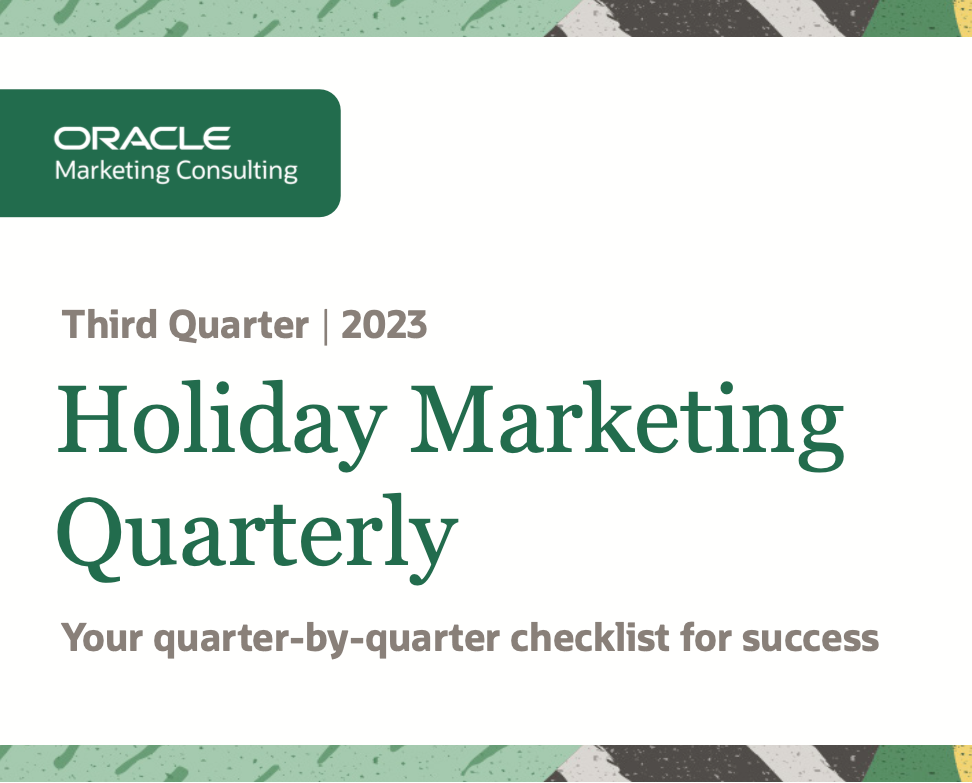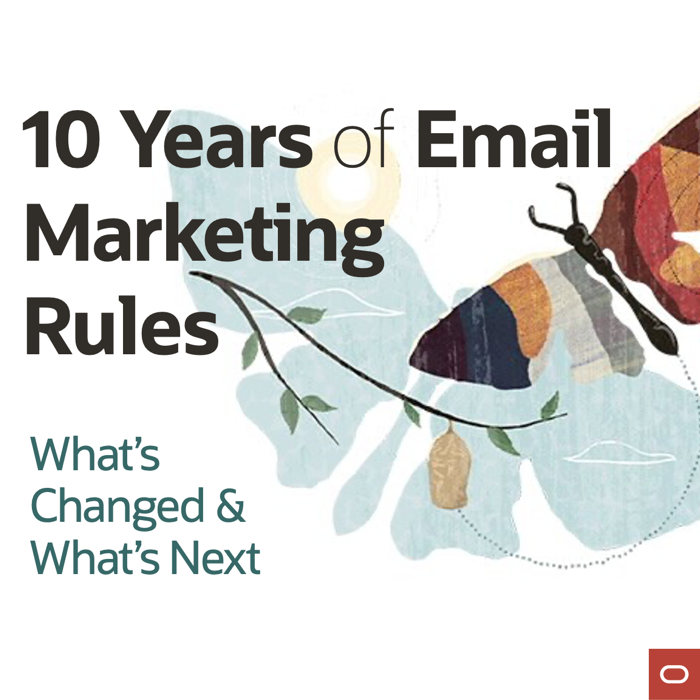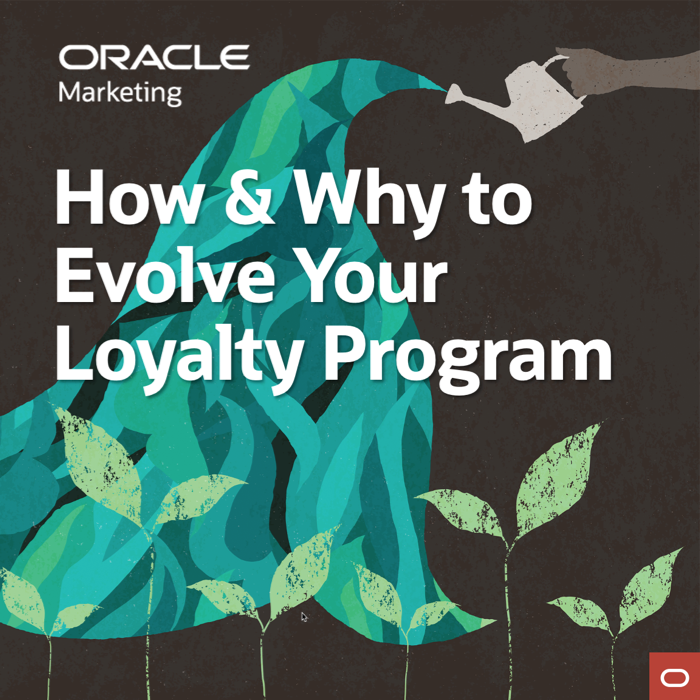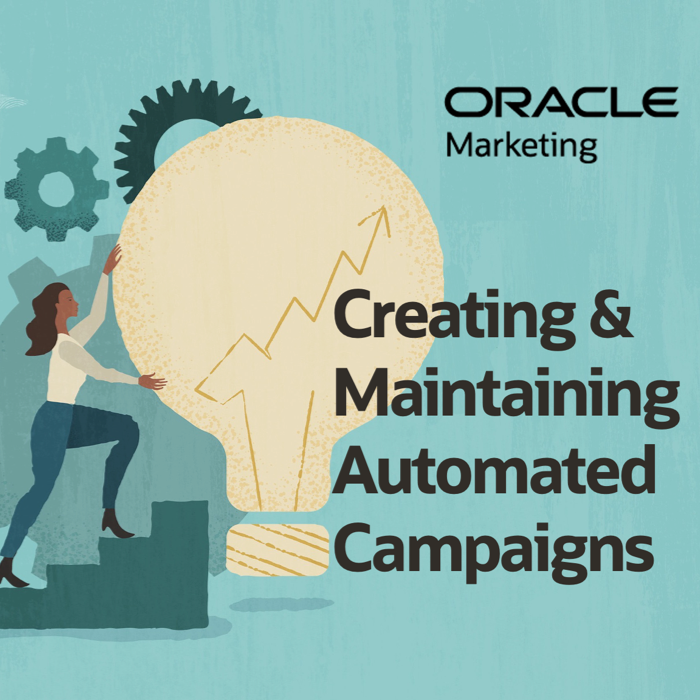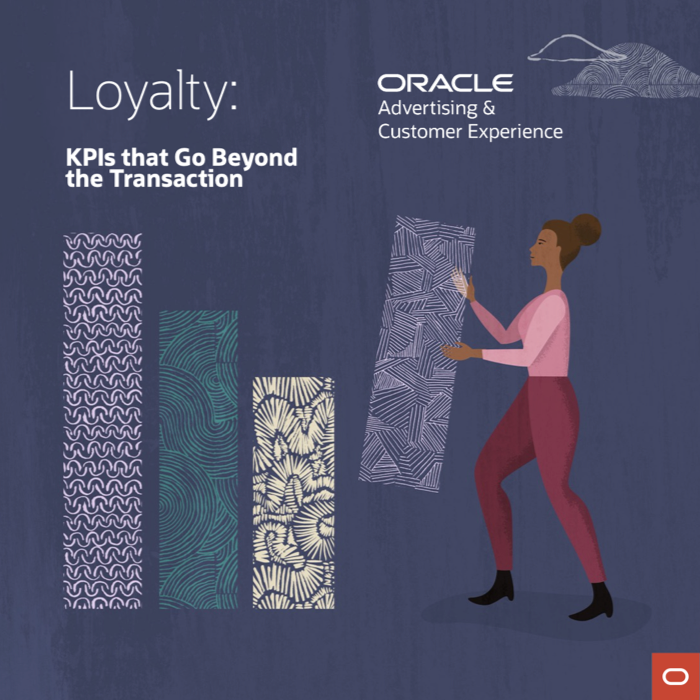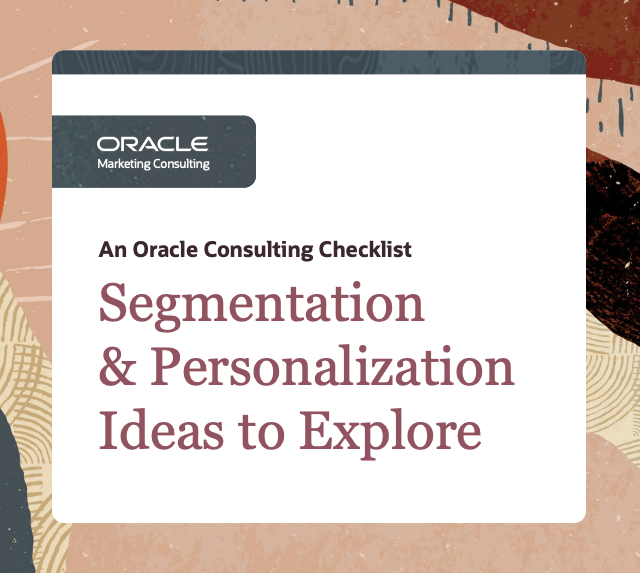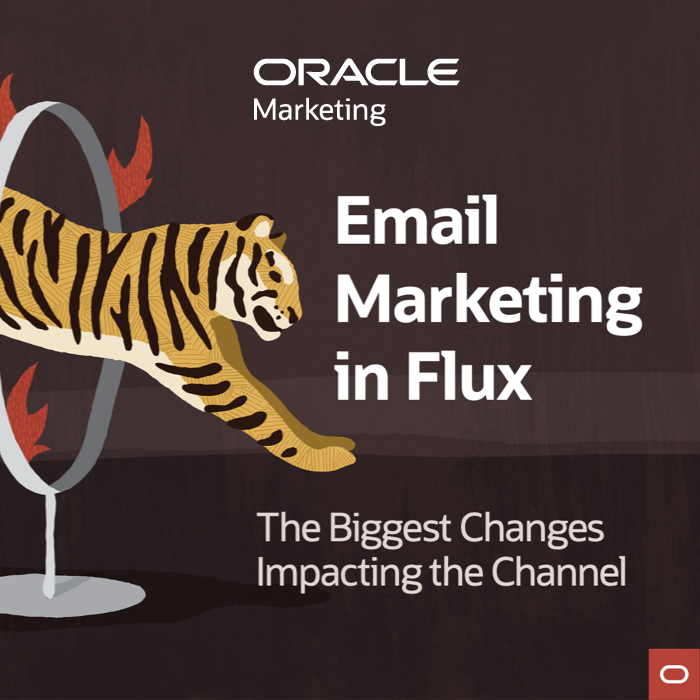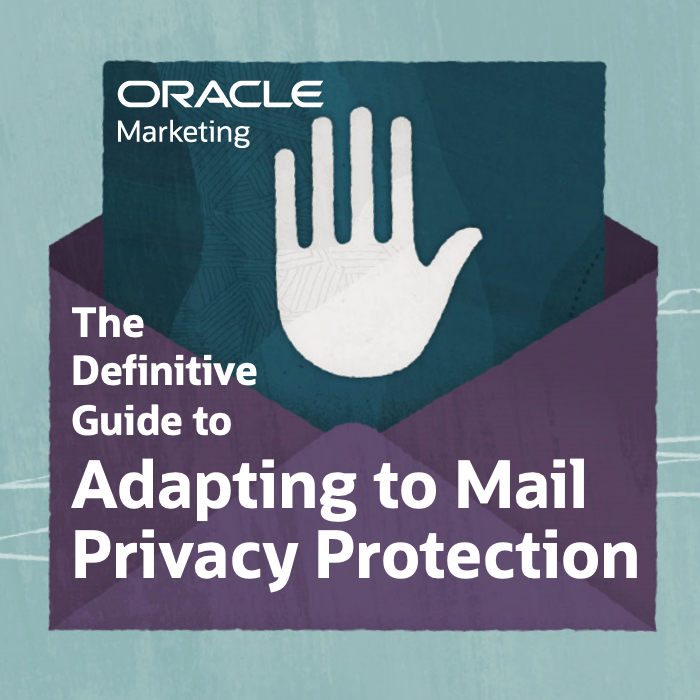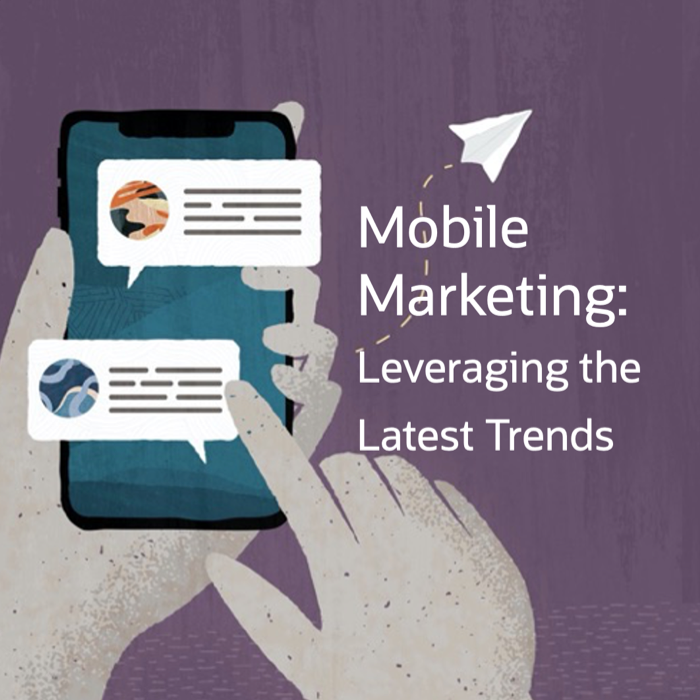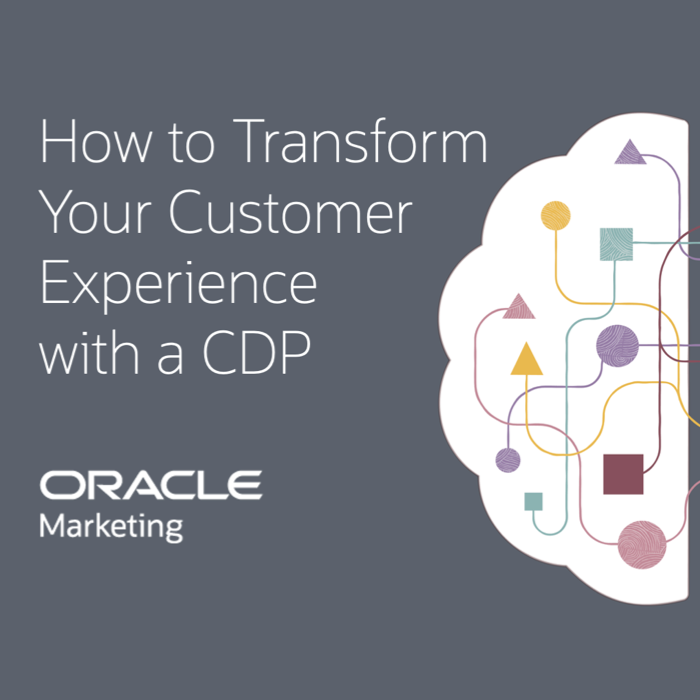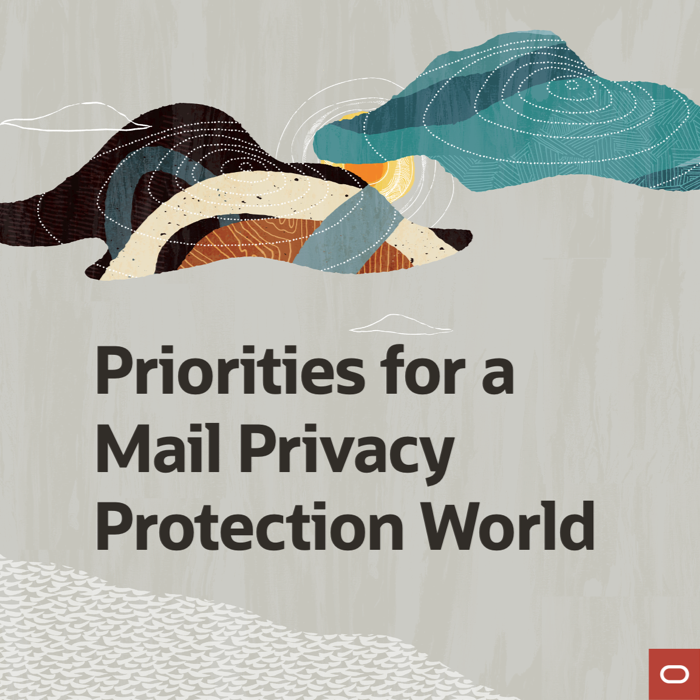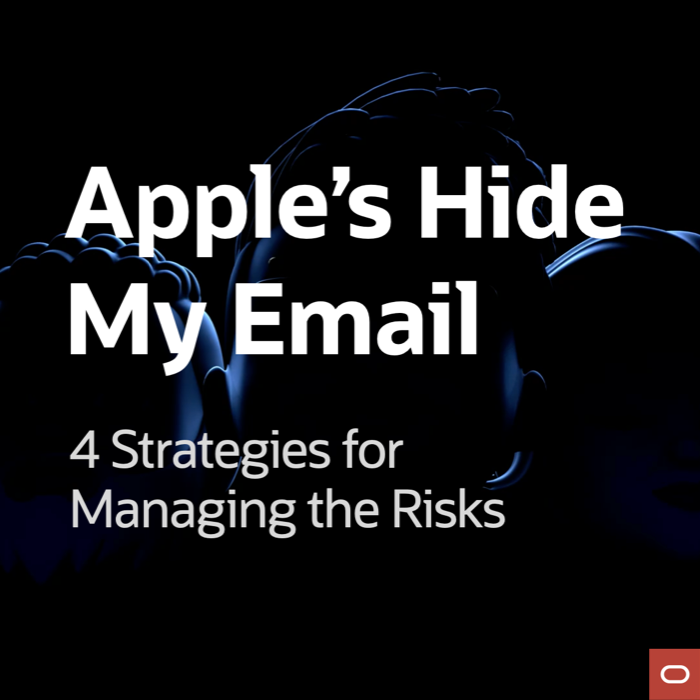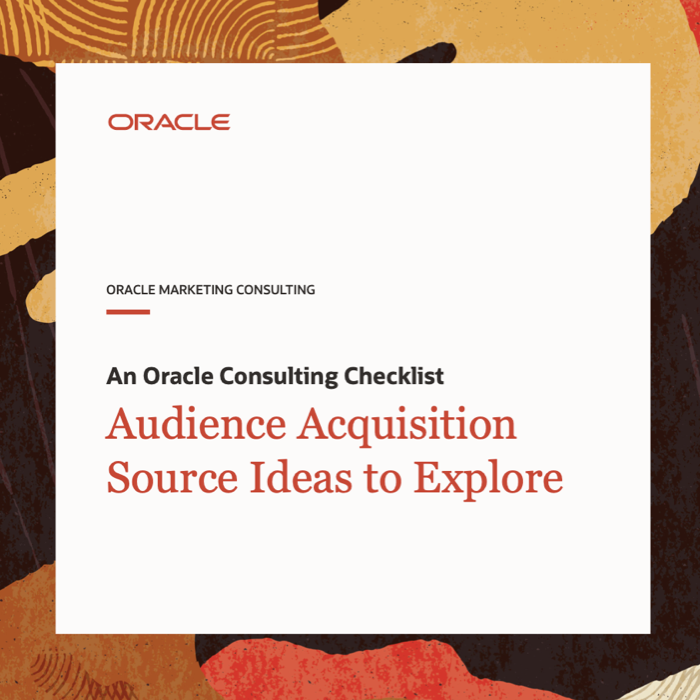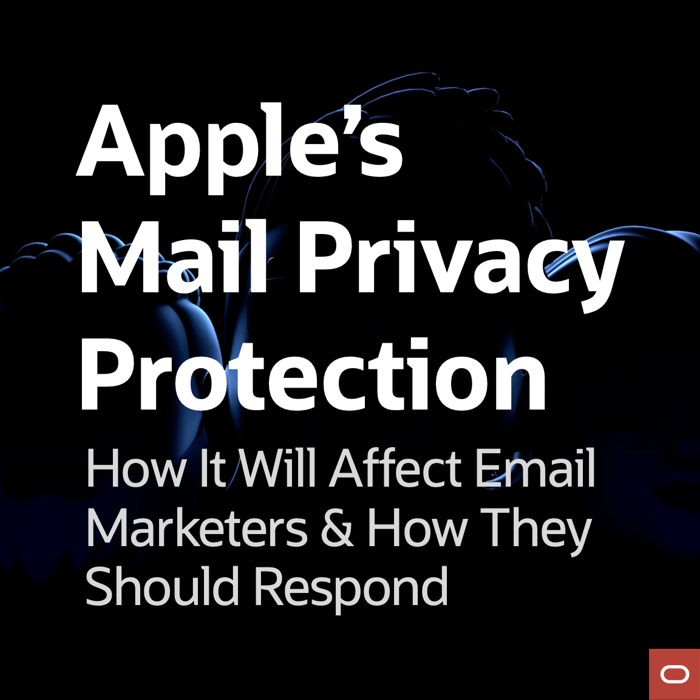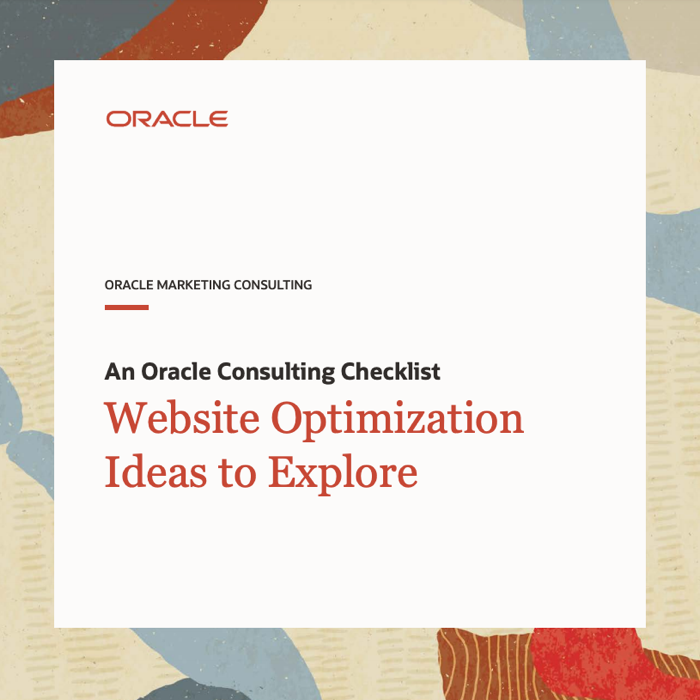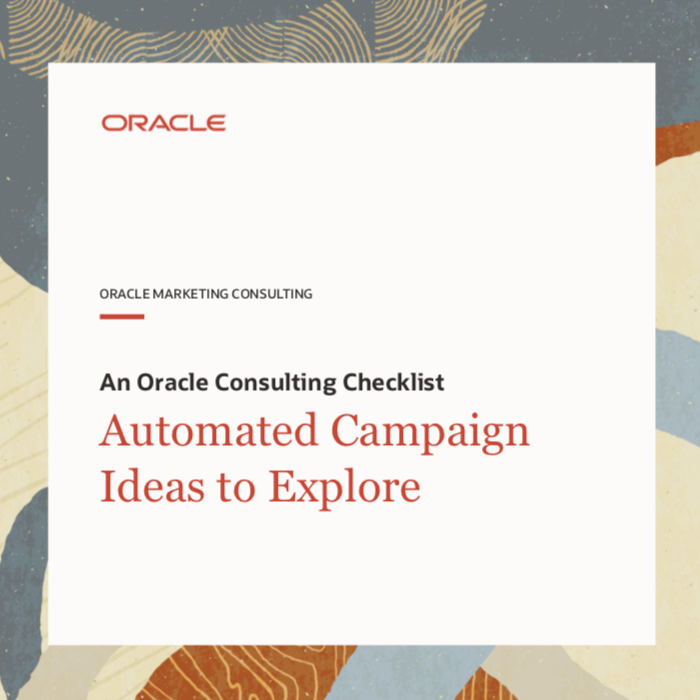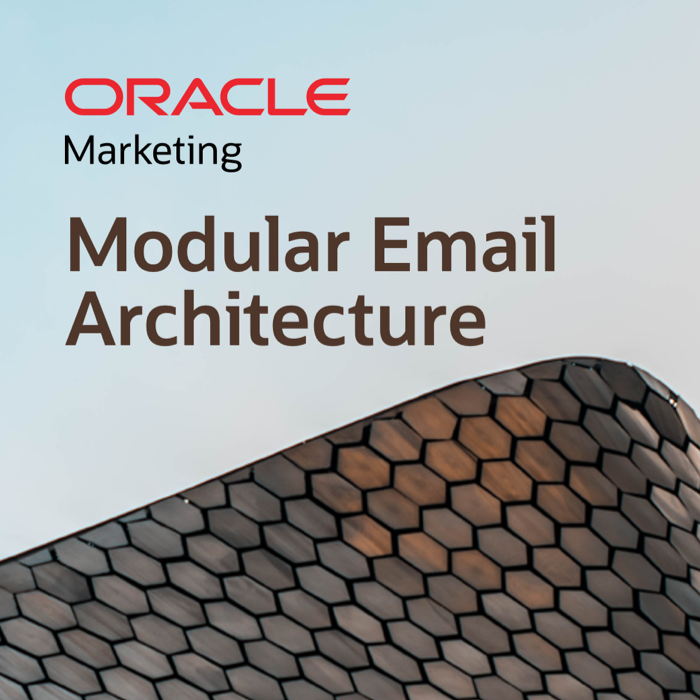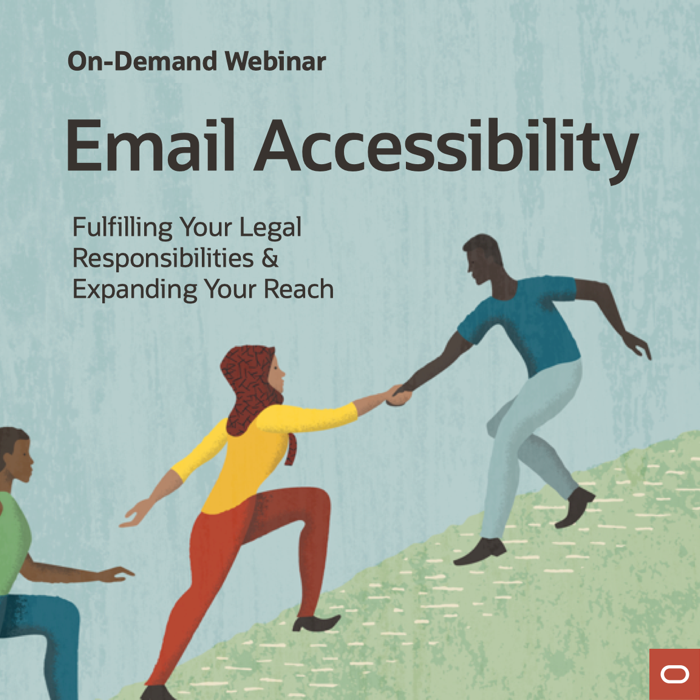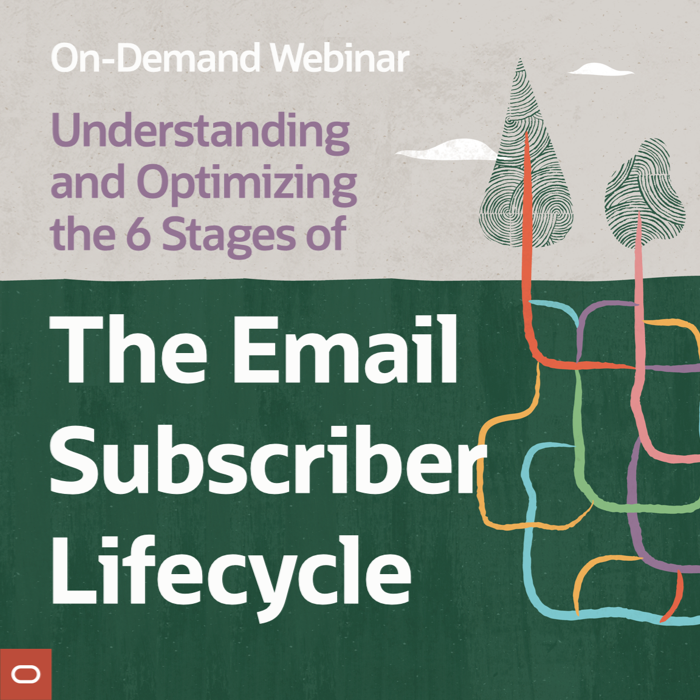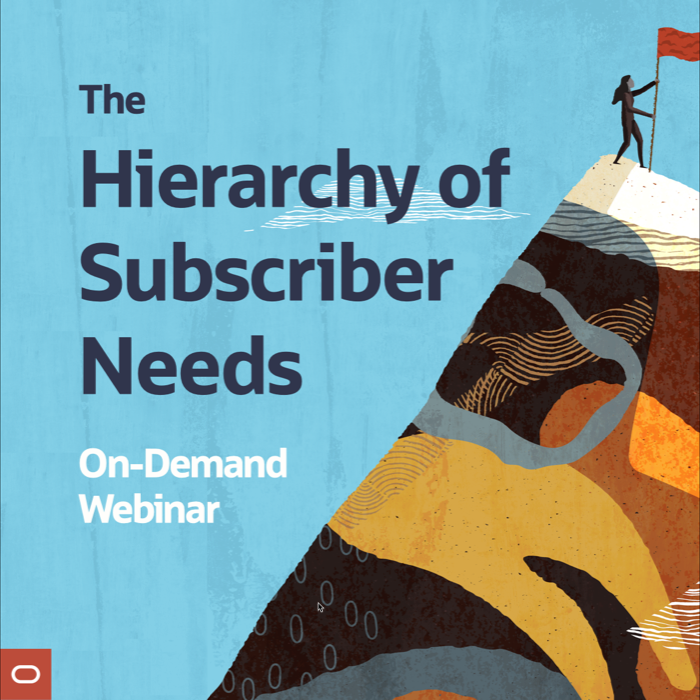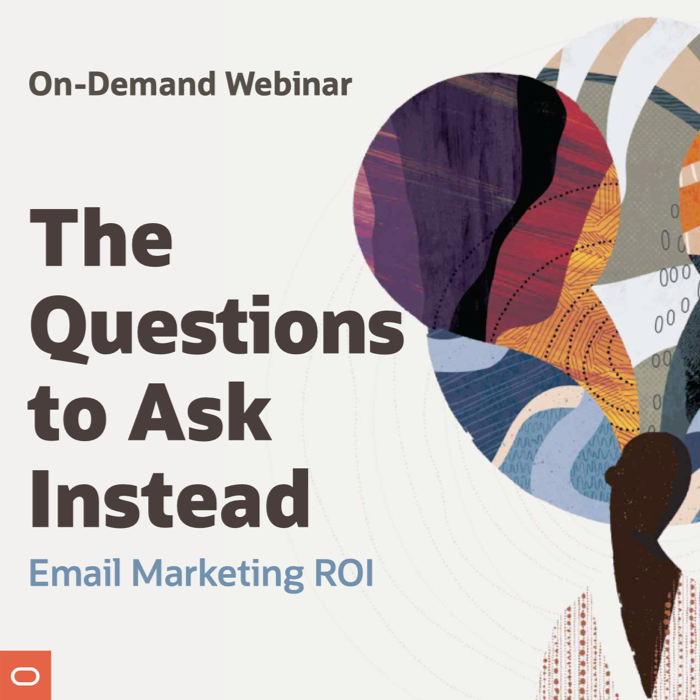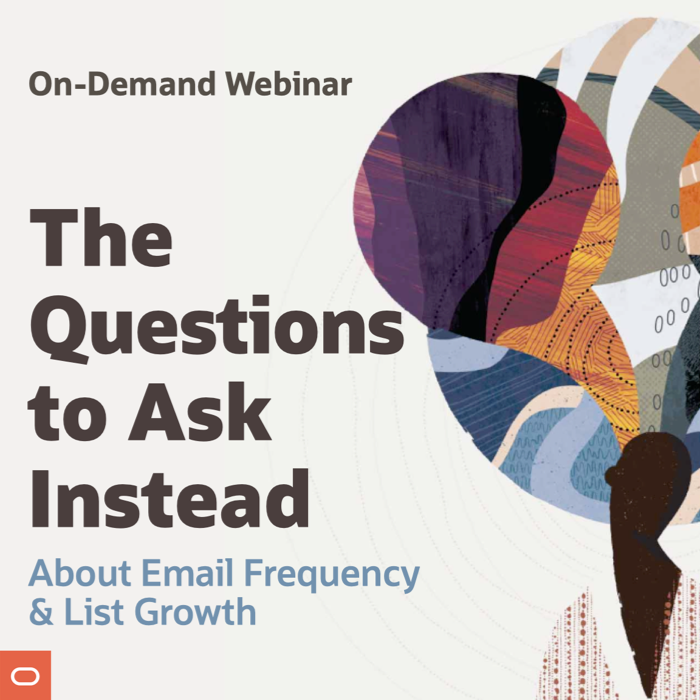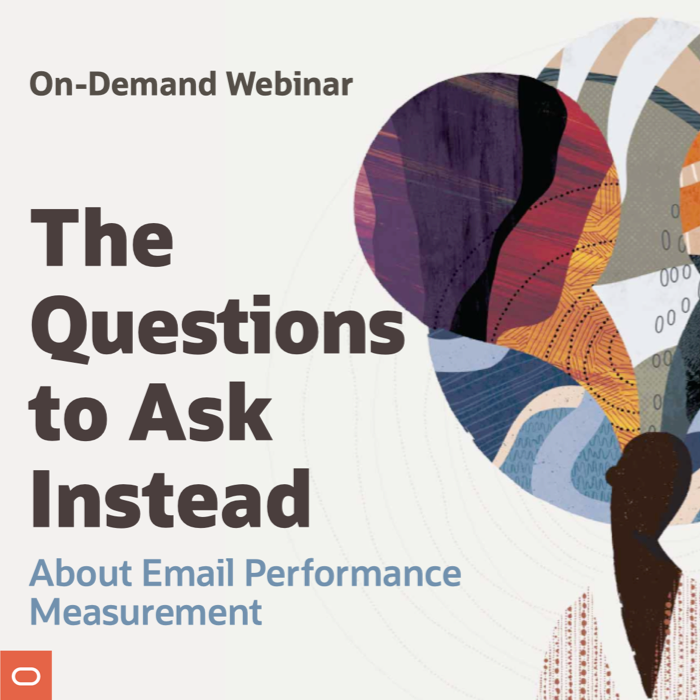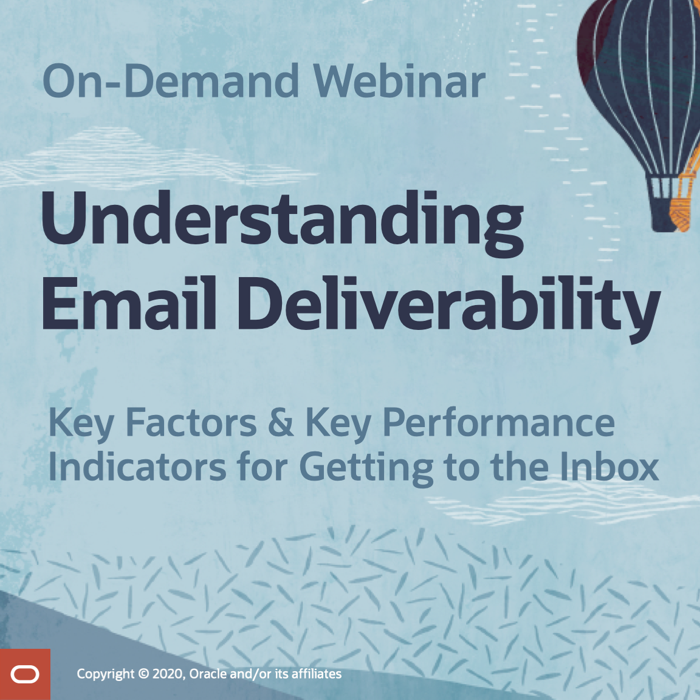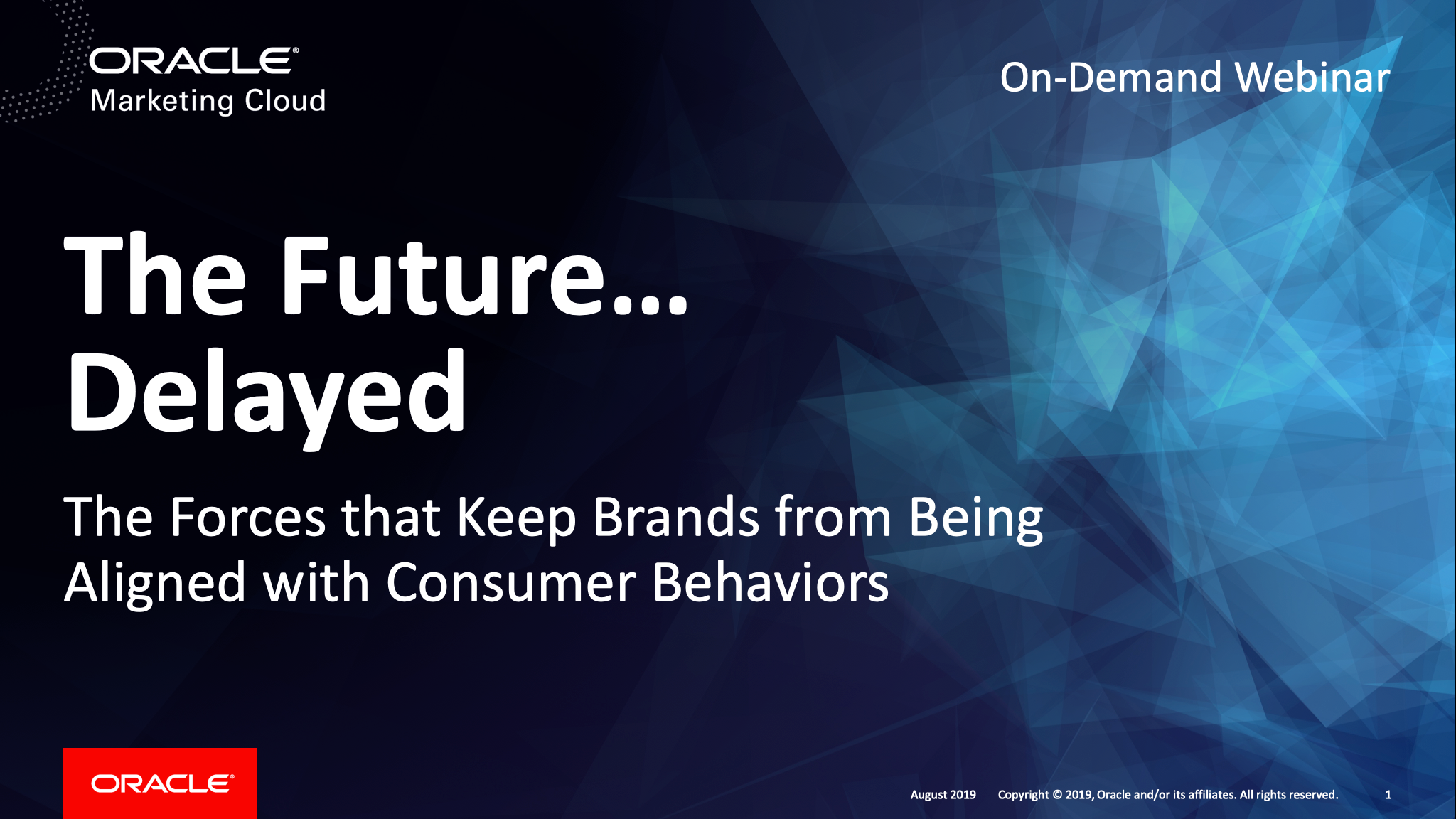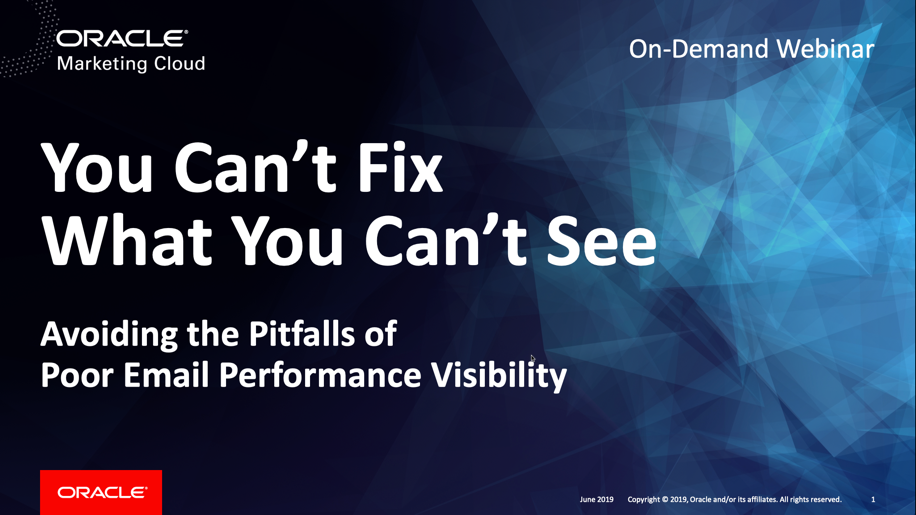1 in 10 B2C Marketers Using Lightboxes for Email Signups
Posted by Chad S. White on March 19, 2013
More prominent email signup forms and links perform better. In-your-face lightboxes take this logic to the far end of spectrum and are enjoying growing popularity, particularly among retailers.
Unlikely the justly vilified pop-up and pop-under, lightboxes or popovers don’t launch a new window. They are a part of the page you’re already viewing and require you to complete the form or close the lightbox to regain access to the rest of the webpage, which is usually greyed out in the background, as you can see in this Ann Taylor example.
Ten percent of marketers are using lightboxes for email signups, according to ExactTarget research involving more than 160 B2C brands, including retailers, restaurants, manufacturers, travel and hospitality, and nonprofits. With more than 13% of retailers using an email signup lightbox, they are more than three times more likely to use this tactic than non-retailers. A few years ago hardly any marketers were using lightboxes.
The risk with lightboxes is that they are interruptive and therefore potentially annoying if they pop up too often. To minimize this risk, most brands set limits on how often lightboxes can be triggered for a particular visitor and some only trigger them for first-time visitors. Some also delay the launch of the lightbox for five or more seconds to give visitors a chance to start engaging with the site.
While all the talk lately has been about lightboxes for email signups, roughly as many marketers use them for post-signup confirmation instead. This is particularly true of brands like Brooks Brothers that have an email signup form in the footer of all their webpages. Their post-signup lightbox thanks the new subscriber for signing up and also asks for some additional information and preferences to improve their email experience.
Category: Uncategorized

Welcome! Email Marketing Rules is your guide to understanding the best practices of this complex, often misunderstood channel as you craft the best executions for your brand. Every week, we’ll explore strategies and tactics, discuss tips and inspiration, and dig into industry news and trends.
Chad S. White
Head of Research
Oracle Digital Experience Agency
Author of Email Marketing Rules and nearly 4,000 articles about digital and email marketing
Topics
Recent Posts
Archives
- April 2024 (5)
- March 2024 (9)
- February 2024 (10)
- January 2024 (7)
- December 2023 (7)
- November 2023 (6)
- October 2023 (10)
- September 2023 (7)
- August 2023 (9)
- July 2023 (7)
- June 2023 (8)
- May 2023 (8)
- April 2023 (9)
- March 2023 (9)
- February 2023 (6)
- January 2023 (10)
- December 2022 (5)
- November 2022 (7)
- October 2022 (10)
- September 2022 (9)
- August 2022 (6)
- July 2022 (5)
- June 2022 (8)
- May 2022 (7)
- April 2022 (4)
- March 2022 (9)
- February 2022 (7)
- January 2022 (7)
- December 2021 (5)
- November 2021 (7)
- October 2021 (9)
- September 2021 (7)
- August 2021 (9)
- July 2021 (6)
- June 2021 (8)
- May 2021 (6)
- April 2021 (3)
- March 2021 (6)
- February 2021 (6)
- January 2021 (9)
- December 2020 (8)
- November 2020 (6)
- October 2020 (10)
- September 2020 (9)
- August 2020 (8)
- July 2020 (10)
- June 2020 (12)
- May 2020 (6)
- April 2020 (5)
- March 2020 (8)
- February 2020 (6)
- January 2020 (7)
- December 2019 (6)
- November 2019 (6)
- October 2019 (8)
- September 2019 (3)
- August 2019 (5)
- July 2019 (6)
- June 2019 (3)
- May 2019 (7)
- April 2019 (3)
- March 2019 (4)
- February 2019 (3)
- January 2019 (5)
- December 2018 (9)
- November 2018 (7)
- October 2018 (11)
- September 2018 (7)
- August 2018 (9)
- July 2018 (7)
- June 2018 (5)
- May 2018 (5)
- April 2018 (7)
- March 2018 (8)
- February 2018 (3)
- January 2018 (6)
- December 2017 (8)
- November 2017 (8)
- October 2017 (4)
- September 2017 (6)
- August 2017 (5)
- July 2017 (11)
- June 2017 (9)
- May 2017 (8)
- April 2017 (5)
- March 2017 (5)
- February 2017 (3)
- January 2017 (5)
- December 2016 (11)
- November 2016 (6)
- October 2016 (5)
- September 2016 (10)
- August 2016 (10)
- July 2016 (6)
- June 2016 (6)
- May 2016 (8)
- April 2016 (7)
- March 2016 (9)
- February 2016 (8)
- January 2016 (8)
- December 2015 (7)
- November 2015 (8)
- October 2015 (7)
- September 2015 (8)
- August 2015 (4)
- July 2015 (8)
- June 2015 (4)
- May 2015 (6)
- April 2015 (8)
- March 2015 (6)
- February 2015 (9)
- January 2015 (7)
- December 2014 (13)
- November 2014 (7)
- October 2014 (9)
- September 2014 (11)
- August 2014 (13)
- July 2014 (9)
- June 2014 (6)
- May 2014 (8)
- April 2014 (6)
- March 2014 (11)
- February 2014 (7)
- January 2014 (8)
- December 2013 (10)
- November 2013 (8)
- October 2013 (11)
- September 2013 (10)
- August 2013 (12)
- July 2013 (9)
- June 2013 (10)
- May 2013 (12)
- April 2013 (7)
- March 2013 (9)
- February 2013 (5)
 Email Marketing Rules
Email Marketing Rules